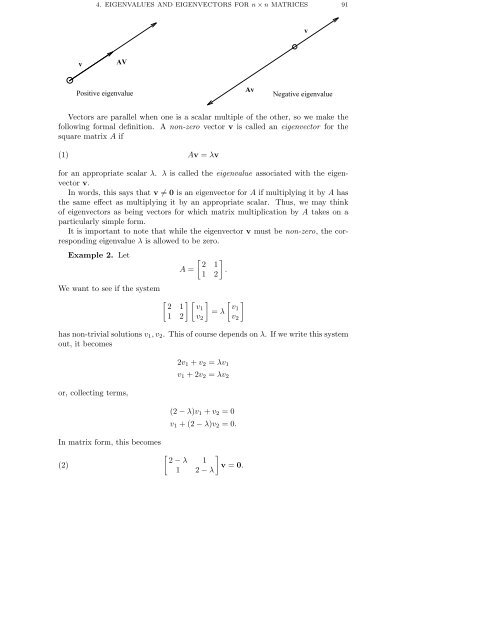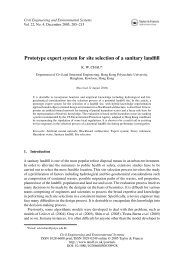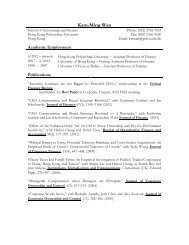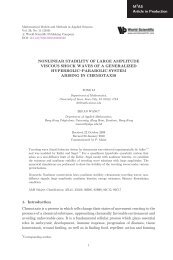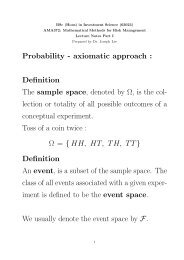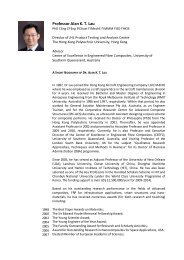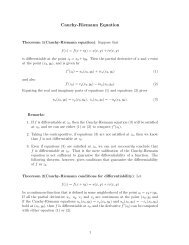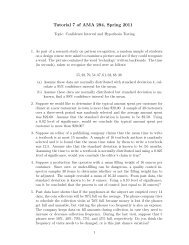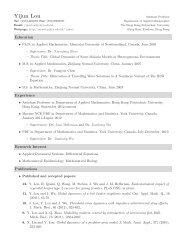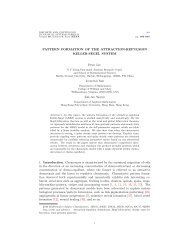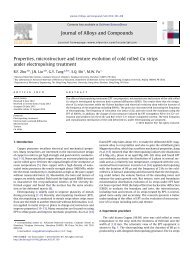DETERMINANTS AND EIGENVALUES 1. Introduction Gauss ...
DETERMINANTS AND EIGENVALUES 1. Introduction Gauss ...
DETERMINANTS AND EIGENVALUES 1. Introduction Gauss ...
Create successful ePaper yourself
Turn your PDF publications into a flip-book with our unique Google optimized e-Paper software.
4. <strong>EIGENVALUES</strong> <strong>AND</strong> EIGENVECTORS FOR n × n MATRICES 91vvAVPositive eigenvalueAvNegative eigenvalueVectors are parallel when one is a scalar multiple of the other, so we make thefollowing formal definition. A non-zero vector v is called an eigenvector for thesquare matrix A if(1) Av = λvfor an appropriate scalar λ. λ is called the eigenvalue associated with the eigenvectorv.In words, this says that v ≠ 0 is an eigenvector for A if multiplying it by A hasthe same effect as multiplying it by an appropriate scalar. Thus, we may thinkof eigenvectors as being vectors for which matrix multiplication by A takes on aparticularly simple form.It is important to note that while the eigenvector v must be non-zero, the correspondingeigenvalue λ is allowed to be zero.Example 2. LetA =[ ]2 <strong>1.</strong>1 2We want to see if the system[ ][ ] [ ]2 1 v1 v1=λ1 2 v 2 v 2has non-trivial solutions v 1 ,v 2 . This of course depends on λ. If we write this systemout, it becomesor, collecting terms,In matrix form, this becomes(2)2v 1 + v 2 = λv 1v 1 +2v 2 =λv 2(2 − λ)v 1 + v 2 =0v 1 +(2−λ)v 2 =0.[ ]2 − λ 1v = 0.1 2−λ


